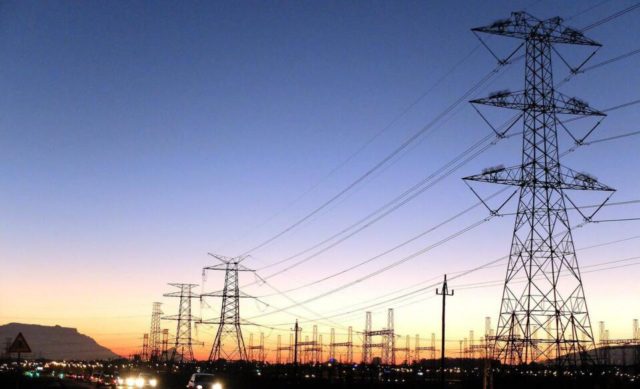Market sentiment took a turn for the worse on Tuesday afternoon as South Africa’s energy crisis deepened with the electricity supply outlook falling to its weakest in two-and-a-half years.
MARKET sentiment took a turn for the worse on Tuesday afternoon as South Africa’s energy crisis deepened with the electricity supply outlook falling to its weakest in two-and-a-half years.
Eskom said on Tuesday that the national energy supply in South Africa had deteriorated further due to unplanned breakdowns, and an ongoing industrial action, forcing it to cut power supply for many more hours a day.
The struggling utility implemented Stage 6 load shedding from 4pm until 10pm on Tuesday night, returning to Stage 4 load shedding from 10pm until midnight and reduced to Stage 2 until 5am on Wednesday morning.
The unstable electricity supply schedule would then be repeated for the rest of today but the risk of a higher stage of load shedding remains high, Eskom warned.
This is the first time Eskom has implemented Stage 6 since December 2019.
Eskom currently has 3,218MW on planned maintenance, while another 17,621MW of capacity is unavailable due to breakdowns.
Eskom spokesperson Sikonathi Mantshantsha said this was due to the unlawful and unprotected labour action, which had caused widespread disruption to Eskom’s power plants.
Mantshantsha said three of the 10 generation units that had tripped during the night had been returned to service, however, this was still insufficient to stave off the implementation of Stage 6 load shedding.
“This has compelled Eskom to continue taking precautionary measures to conserve generation capacity and safeguard plant from damage,” he said.
“There is a high risk that the stage of load shedding may have to change at any time, depending on the state of the plant.”
On the back of this news, the rand weakened to a one-week low, breaching R16 to the dollar to trade at R16.04 to the greenback by 4pm.
Business Unity SA (Busa) said on Tuesday,“ The implementation of Stage 6 load shedding is a serious blow to an economy that is already struggling with low growth and a lack of decisive action on the part of government to make the necessary interventions to attract investment and put the country on a sustainable and inclusive growth path.”
It said this would be a serious blow to all sectors of the economy and could lead to small and medium businesses buckling under the pressure of managing an untenable situation.
“We now urge government to do whatever is necessary to enable Eskom to move away from high levels of load shedding as a matter of urgency, to deal decisively with reported acts of sabotage at Eskom by enabling law and order agencies to act with urgency to bring those responsible for such sabotage to book and to remove any remaining barriers to private sector generation of power and getting renewables onto the grid as quickly as possible,” Busa said.
However, stocks shunned the currency market selloff as the JSE All Share index rose more than 1 percent to a near three-week high of 68,868 points during early trade, lifted by optimism following China’s decision to ease some Covid-19 restrictions.
Makwe Masilela, the chief investment officer at Makwe Fund Managers, said that China’s decision to relax Covid-19 restrictions for travellers had been a positive for commodity stocks.
However, Masilela said that the aggressive power cuts in South Africa will result in at least half a day of production being lost, with dire consequences for the economy.
“Stage 6 load shedding means it’s not looking okay and maybe we can read that on the rand itself,” he said.
“On a day when we see the dollar stabilising and commodity currencies flailing up, it’s going to be very negative for the economy coming from the mood of the workers, investors and production itself.”
Stage 6 load shedding means that Eskom will cut power supply for at least six hours a day on average, and this would disrupt the country’s productivity and consumer activity.
It comes when South Africa’s economy needs all the support it can to build on the first quarter growth of 1.9 percent following the devastating floods in KwaZulu- Natal, which disrupted manufacturing production.
Investec chief economist Annabel Bishop said South African consumers were faced with another R2 per litre increase for fuel next week, which would push up inflation further, along with higher electricity prices, and the Stage 6 load shedding.
“Stage 6 load shedding will further cut into South Africa’s production and so its trade activity, with the second quarter expected to be a significantly weaker quarter than the first quarter,” Bishop said.
“The slowdown in global activity will also afflict the figures.”
– BUSINESS REPORT








